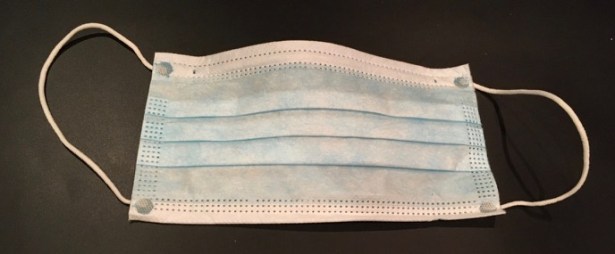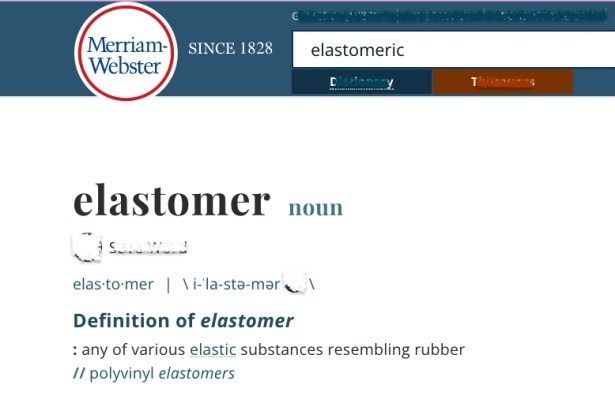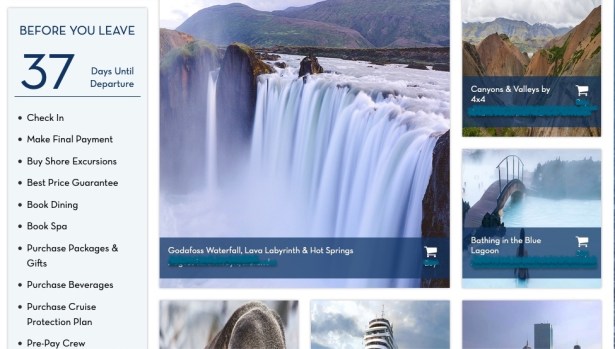The kids and I sailed with Holland America Line once before, when they were fairly young. Embarking on HAL’s Nieuw Statendam in August 2022 was my husband’s first cruise with this company. We spent 24 days together on this grand vessel, visiting four countries in addition to the United States, and briefly crossing into the Arctic Circle.
The experience was good enough for us to purchase Future Cruise Credits (FCC)—a minor commitment to future travel with the same company—while still on board.
Link to explanation of FCC’s at The Points Guy site
Our transatlantic (TATL) cruise itinerary called for boarding the ship in Boston, calling in several Canadian ports, followed by stops in Greenland, Iceland, Greenland again, Canada again, France in the form of the island of St. Pierre, Canada third time, then Bar Harbor, Maine, and finally back to Boston.
The round trip itinerary—no flights required from our New England home—absolutely sold us on this particular itinerary. 
If we hadn’t had a credit to use from a scheduled 2020 trip cancelled due to the pandemic, it’s unlikely we would have gone anywhere during the rampant snarling of summer travel in 2022. If we’d had an international flight planned, I can guarantee we would have called off any trip as reports of hours’ long lines snaking outside of airports proliferated in the lead up to our departure.
While our cruise wasn’t perfect, the hassles were fairly minimal and we found the experience well worth the bumps in those road that we did encounter.
I plan to publish a series of posts covering ports we visited, but, today, I’ll begin with an overview of embarking on transatlantic travel on HAL as a family with teens. I hope this perspective is helpful to other potential family cruisers since Holland America has a reputation for catering to an elderly crowd.
My kids enjoyed the trip, but there were very few people their age on the ship. We socialized with each other and with adults with whom I’d become acquainted on Cruise Critic prior to the voyage.
In addition to a lack of youth-oriented trip reports, I also couldn’t find much information for travelers with special needs regarding Polar-adjacent travel in the North Atlantic. I live with a chronic condition that sometimes affects my mobility and energy levels. Here’s hoping I can offer relevant tips for future adventurers with similar limitations in this and future posts.
First impressions
As it happens, one of the first SNAFU’s of our trip occurred at its very beginning: embarkation from Boston’s Flynn (formerly Black Falcon) Cruise Port was a mess. More frequent cruisers than I commented later that they’d never endured such a poorly executed boarding elsewhere or in Boston.
Here’s the official Massport site for the cruise terminal.
It’s easy to mock social media and blame it for many of society’s ills, but the utility of crowdsourced information cannot be denied. If I weren’t an active member of Cruise Critic—and a participant in a Roll Call for our August voyage—my embarkation experience could have been even worse. Tips from passengers who arrived at the port earlier than we did saved us at least a couple of hours of unnecessary waiting on site since we could elect to leave our home later to drive to the terminal.
To begin with, HAL sent notification a day ahead of boarding offering a completely revised boarding plan with new times for each passenger, all of which superseded the information given on one’s boarding pass. By not updating boarding passes—offered in digital format for cruise passengers just like most of us use on flights!—Holland America missed an opportunity to reduce confusion instead of sowing it.
 HAL reaped what it sowed. Thousands of people waited outside for hours beyond the embarkation time on their documents.
HAL reaped what it sowed. Thousands of people waited outside for hours beyond the embarkation time on their documents.
Nowhere in their last minute, change-of-plans missive did HAL inform embarking passengers that their digital documents would fail to update to reflect the new instructions. It’s bad to have a communication system that can’t update digital docs in real time; it’s worse not to confess to this fact up front to help reduce confusion!
At least two ambulances† were required to whisk away people who weren’t up to the physical demands of standing in line for so long. We were incredibly fortunate that a recent heat wave ended before this marathon queue, but even 80°F became uncomfortable to many, and, while much of the line was shaded by adjacent buildings, there was no other shelter. Almost no seating was available, either.
 Because my own mobility limitations wax and wane, I always register a request with common carriers at the time of booking for wheelchair assistance. I’m often well enough to decline the requested service upon arrival at a terminal, but it is harder to get help on demand when it is needed if I haven’t initiated the process in advance. At Boston’s cruise port, it was lucky I was having a pretty good day.
Because my own mobility limitations wax and wane, I always register a request with common carriers at the time of booking for wheelchair assistance. I’m often well enough to decline the requested service upon arrival at a terminal, but it is harder to get help on demand when it is needed if I haven’t initiated the process in advance. At Boston’s cruise port, it was lucky I was having a pretty good day.
When we arrived at the port, I checked in with an employee and noted we’d requested wheelchair assistance. According to that agent, “So did 1/3 of the people here waiting to board!”
Massport was short by at least dozens of personnel to offer wheelchair assistance. I believe that the lack of “timely assistance” was in violation of U.S. law. It reflected poorly on the port and on the city of Boston.
While the kind Massport employee I’d encountered couldn’t do much for me or anyone else, this lady did find folding chairs for a few of us who were concerned about walking the length of the line that disappeared out of sight across at least two long city blocks. Later arrivals sat on the curb.
My husband and kids trekked to the back of the line, and I waited in tolerable conditions if not comfort with the “special assistance” crowd. It was from that vantage point near the entrance that I saw one woman collapse and get taken away by ambulance.
By the time I boarded, I had yet to see a single passenger escorted onto the ship via wheelchair pushed by port employees. That period of time extended for well over an hour. The fortunate disabled passengers were those traveling with their own mobility aids and friends or family members capable of providing assistance.
After about an hour waiting alone, my family made it to the front of the line where I was sitting. Since no wheelchair assistance passengers were being taken aboard the ship as far as I could see, I rejoined them. My kids took my carry on bag, and I walked myself carefully through the disorganized thicket inside the terminal building with an occasional hand from one of my able-bodied relatives. The gangway with which we boarded Nieuw Statendam was set at a particularly steep angle, too. A fellow passenger said they’d heard that the usual “jet bridge” style boarding ramp for Boston was broken and awaiting repairs, but I have no confirmation for that rumor. I was glad I’d brought my cane to help negotiate boarding, though, fortunately, I didn’t need it much once we were at sea.
The gangway with which we boarded Nieuw Statendam was set at a particularly steep angle, too. A fellow passenger said they’d heard that the usual “jet bridge” style boarding ramp for Boston was broken and awaiting repairs, but I have no confirmation for that rumor. I was glad I’d brought my cane to help negotiate boarding, though, fortunately, I didn’t need it much once we were at sea.
Again, according to people who have cruised Boston more than I have, there is a port building here with some features of a modern travel terminal. We were not in that space! Instead, the Nieuw Statendam passengers were being processed in an open, warehouse-like space that might’ve felt familiar to our forebears’ experience at Ellis Island.
The flooring was uneven asphalt, there was no climate control, and there was no reasonable signage to help anyone self-select the correct lines. With various levels of “self check in” one might have performed prior to arriving at the port, there were at least three different types of confirmations that might be required to complete check in on site.
Through dumb luck, we were in the correct line for those who had performed the maximum online steps ahead of time, and we spent only ten to 20 minutes finishing up the check in process before preceding to the gangway that led onto the ship. The new facial recognition software did speed up check in, and, interestingly, could identify ³⁄4 of us with our N95 masks still in place.
One member of the family had to remove a protective mask to be correctly ID’d by the computer.
Some of the confusing requirements befuddling our embarkation day may be laid at the feet of COVID-19. There are national directives demanding certain steps or paperwork, it’s true. Failing to post signage to correctly direct thousands of boarding passengers into the correct lines based upon the status of government and health requirements, however, was entirely the fault of the Flynn Cruise Terminal and its staff.
The communication from HAL that changed boarding times at the last minute stated that a mandatory Coast Guard drill was the cause of the adjustment. That is probably true, but the Coast Guard didn’t prevent HAL from updating information on our virtual boarding passes or within the cruise line’s own app which they tout as an innovation in cruising convenience.
Neither was the Coast Guard responsible for inadequate staffing on the part of Massport, the government agency that runs land-side port operations.
Once we made it on board, the giddy relief of dropping our bags in our beautiful staterooms quickly eased the frustrations of the long morning day. Running the gauntlet of Boston’s cruise terminal was sufficiently exhausting that all of us—even the teens!—spent some part of our first afternoon aboard napping instead of exploring or reveling.
We were told in advance that we would board at 11:40; the port actually seemed to begin embarkation proceedings closer to 14:00 from our vantage amongst the crowds. My first photos from our cabin were taken at 15:45. We were scheduled to sail at 16:00. Nieuw Statendam actually cast off from its Boston mooring at 19:31.
 I think I’m being generous when I say we experienced a delay of at least three hours. For those who view lunch on the ship as the start of their vacation, our embarkation must have been particularly painful. It was certainly debilitating to those of us with health issues, and proved tiring even to young travelers.
I think I’m being generous when I say we experienced a delay of at least three hours. For those who view lunch on the ship as the start of their vacation, our embarkation must have been particularly painful. It was certainly debilitating to those of us with health issues, and proved tiring even to young travelers.
Aside from mentioning that disembarkation three weeks later was similarly hideous—with poor communication again being the element for which HAL itself should be held fully accountable—I won’t go into detail for the latter fiasco. Suffice to say that I will still sail in or out of Boston because “not flying” remains on my list of “good to have” vacation characteristics, but I will always travel through this port carrying as little as possible to preserve my energy, and I will assume zero mobility assistance will be offered regardless of what’s legally mandated or promised.
I cannot, in good conscience, recommend embarking on a cruise out of Boston’s port for anyone with severe mobility restrictions at this time unless that person can afford to travel with sufficient personal assistance to cover all boarding needs. I hope the situation will improve if staffing levels recover, but I wouldn’t bet a friend or loved one’s comfort on it personally.
Also, on the subject of advance communication, I think it is worth pointing out that Holland America Line mandated the wearing of masks indoors, when not eating or drinking, for all passengers as well as crew for the duration of our sailing. This was not announced in advance of embarkation, though it could have been. The captain announced the policy on board the ship, and reminders were broadcast by him and other officers once or twice a day over the public address system.
Most destinations, and all excursions, appeared to have dropped all COVID prevention rules or requirements, though the majority of our fellow travelers opted to wear masks on the one tour bus we joined.
Our group enjoyed a much greater degree of relaxation and feelings of safety due to the enhanced precautions, but some cruisers felt deceived and complained bitterly about the unexpected need to mask. At least one Cruise Critic member in my Roll Call group bragged about “always carrying a drink” in order to intentionally and spitefully subvert the protocols as much as possible.
Most Nieuw Statendam passengers appeared to make a sincere effort to adhere to the mask rules, in our personal experience on the ship. We elected to exceed HAL’s requirements, and we all avoided catching COVID-19, testing negative on our own home tests multiple times during and after the journey. There were reports of viral spread on the ship, however, and visibility of guests in isolation increased over time.
We believe that it was possible for cruise passengers to make personal choices to increase the odds of avoiding getting sick, but that the mask mandate made it many times easier for cautious travelers to do than it would have been otherwise. For example, I would have felt far less comfortable without the face covering requirement when I squeezed onto any of the crowded ship’s tenders required to visit the smaller ports on which we called.
Our family felt fortunate that HAL mandated masks; other passengers felt cheated out of the freedom they thought they’d been promised on the same voyage. Continue reading













